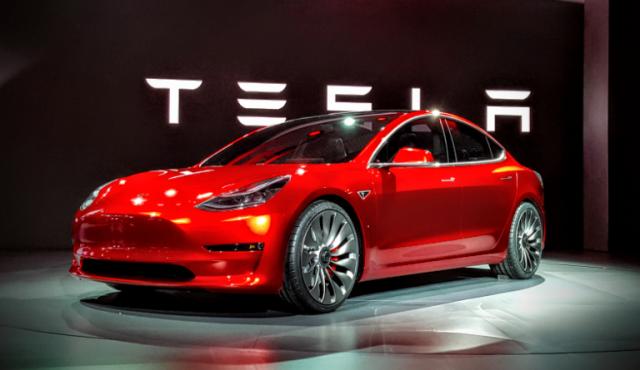[Infographic] A Brief Explanation On The Operation Of An Electric Vehicle
Harin - Dec 26, 2018
![[Infographic] A Brief Explanation On The Operation Of An Electric Vehicle](https://img.mobygeek.com/crop/1200x628/2018/12/26/mw-ez298-electr-20161102114713-zh-5148.jpg)
In this post, we will explain to you how an electric vehicle works. It is actually not as complicated as you have thought.
- Battery Bike: How Much Does The Battery Cost? What Type Is The Best?
- This Electric Car Battery Takes Only 5 Minutes To Recharge
- Looking For The Best Electric Bike In India 2021? Take A Look At These
2018 is the year of electric vehicles (EVs). The sales of EVs are increasing around the globe as technology is getting better. There are many different types of electric cars on the market right now, and their prices are quite affordable.
But do you know the exact operation of an electric vehicle?
For many people who have no knowledge of how technical things work, comprehending an electric vehicle’s operation seems to be overwhelming. However, it is even simpler than understanding the operation of a standard car.
First of all, we need to thank Nikola Tesla, the inventor behind alternating current with which electric cars can exist.
Most of the electric cars operate by converting direct current electricity to alternating current electricity, which is the theory invented by Nikola Tesla.
Direct current electricity is one-way electricity while with alternating current, the flow of electron alternates or changes. An electric vehicle composes of five fundamental aspects which are all needed to generate power for the car to run and recharge.
1. The Battery Pack
The battery pack is considered the key element of the vehicle. The battery consists of approximately 7000 lithium-ion battery cells producing direct current.
A coolant pumped is placed between the stacked batteries so that they are cool and work efficiently. Battery’s performance is gradually becoming more efficient. An EV could only drive a short distance in the past, whereas new vehicles can travel for quite a long distance (several hundred miles).
2. Inverter
This help converting direct current into alternating current. During regenerative braking, the inverter performs a vital function of transferring the energy back to the battery pack as it turns the decelerating car’s kinetic energy to electricity.
3. Induction Motor
Electric cars utilize induction motors. Depending on the manufacturer, the induction motor can be a permanent magnet electric one which you can find in a Tesla Model 3, or it can be an AC induction motor.
The induction motor will rotate due to a rotating magnetic field produced by the alternating current. The difference between a permanent magnet motor and an AC induction motor is that the permanent magnet one does not require electricity for the motor to spin because the rare-earth metals are constantly on.
4. Drivetrain
The power from the motor is transmitted by a single transmission to the car’s wheels so that it can run forward.
5. Charging
The last element of an electric vehicle is the charging. When you plug your vehicle into a power source, your car will be charged.
There are three ways with which you can charge electric cars.
The first method is charging at home where you can use a standard power supply. This usually takes around 3 to 4 kilometers an hour to charge.
The next method is charging your vehicle at a public charging station. With a volt circuit of 220/240, your charging time can be improved to 16 to 26 kilometers an hour.
The final way is charging at a specialized charging station with a DC fast charger. These only work with some specific vehicles but they can offer 80% charge within 30 minutes.
Featured Stories

Features - Jul 01, 2025
What Are The Fastest Passenger Vehicles Ever Created?

Features - Jun 25, 2025
Japan Hydrogen Breakthrough: Scientists Crack the Clean Energy Code with...

ICT News - Jun 25, 2025
AI Intimidation Tactics: CEOs Turn Flawed Technology Into Employee Fear Machine

Review - Jun 25, 2025
Windows 11 Problems: Is Microsoft's "Best" OS Actually Getting Worse?

Features - Jun 22, 2025
Telegram Founder Pavel Durov Plans to Split $14 Billion Fortune Among 106 Children

ICT News - Jun 22, 2025
Neuralink Telepathy Chip Enables Quadriplegic Rob Greiner to Control Games with...

Features - Jun 21, 2025
This Over $100 Bottle Has Nothing But Fresh Air Inside

Features - Jun 18, 2025
Best Mobile VPN Apps for Gaming 2025: Complete Guide

Features - Jun 18, 2025
A Math Formula Tells Us How Long Everything Will Live

Features - Jun 16, 2025


Comments
Sort by Newest | Popular